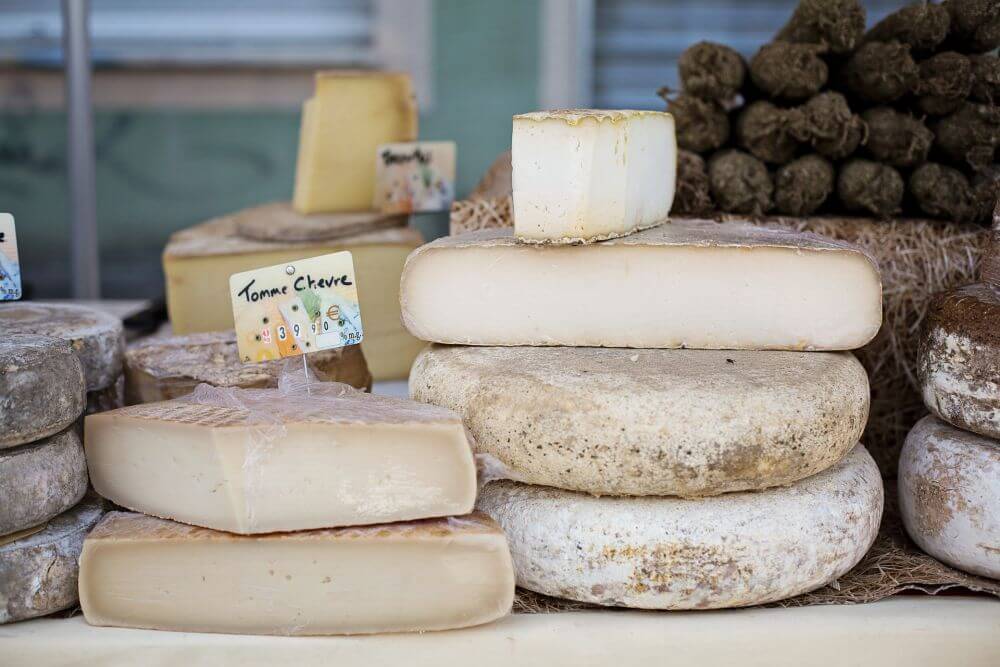Cheese: Taste, Don’t Waste

We waste a truckload of cheese in New Zealand.
Each year we send 1,349 tonnes of cheese to the landfill, which by volume, actually isn’t very much compared to other foods that we throw away.
But that 1,349 tonnes comes at the phenomenal cost of $16,189,383!
You read that right, we waste $16 million of cheese every year – not because we are throwing away mountains of mozzarella, but because it is an expensive food. Seeing as it costs us so much to buy it, we really should give cheese the love that it deserves.
Cheesemonger Calum Hodgson from Sabato shared his tips on how to look after our cheese:
Dates
The best before date gives little indication of the quality or whakapapa of your cheese. You will learn more about your cheese by asking for the produced-on date to see when it was made as opposed to the date you are ‘supposed’ to eat it by. Cheese ripens with age, so often it is only reaching its peak by the best before date.
Cheese can often be safely eaten after its best before date – just rely on your senses (sight, smell and taste).

While they may not look appealing, all of these items in this image are edible.
Storage
Cheese needs to be stored in the vegetable crisper drawer of your fridge in order for it to maintain its moisture and avoid drying out.
Think of cheese like celery – if left in the fridge uncovered it will quickly lose moisture and go limp. Stored in the vegetable crisper drawer, celery will retain its moisture, taste great and produce a crisp snap when eaten. Likewise with cheese, the available moisture, quality and flavour will be preserved much better if it is kept in the vegetable crisper drawer.
Keep the cheese well-wrapped in baking paper or the paper provided by your cheesemonger. Cheese paper lets it breathe.
When you are serving, it is best to get it out of the fridge a wee while before you want to eat it as is at its best in a mild climate (8 – 12°C). When cheese is cold, the fat molecules contract and hold in molecules known as odorants, making it less flavourful.
The best storage for cheese is in your tummy, so making regular visits to your cheesemonger will allow you to buy the right amount and taste what is the best at the time.
Mould
It is normal process for cheese to grow mould – mould is what gives blue cheese its name. If your cheese does grow mould, be sure to cut the mould off the surface (leaving a clear margin) and it should be fine to eat.
It is important to have clean hands when handling it as you could contaminate it with bacteria. Hard cheeses are lower risk, as their pH and available moisture reduce pathogenic activity. Soft cheeses have a greater risk of pathogenic development as it has more moisture for nasties to multiply at a faster rate.
Parmesan rinds
If you care for your cheese the only waste you should have is the tough parmesan rinds – but not even these need to go to waste! You can either pop them in your soup or stock pot, or use this recipe to make addictive cheese crackling.
Parmigiano rinds; cut into pieces, bake at 180C° for 20mins until puffed up and transformed into crackling. \m/ pic.twitter.com/aDSjd5Ws8C
— Curd Nerd (@CurdNerd) June 19, 2016
Recipe: Parmigiano Reggiano Cheese Crackling
1. Preheat the oven to 180°C.
2. Cut your leftover Parmigiano Reggiano rinds into strips and place on a lined baking tray.
3. When the oven is hot place the tray in the oven and bake for approximately 15 minutes, turning once, until the rinds puff up.
4. Leave the cheese cracking to cool slightly then chop into bite sized pieces.
5. Use as a snack or crouton, or crush and use to sprinkle or as a crumb.
Editor’s note:
The Ministry for Primary Industry recommends the following food safety tips when it comes to cheese:
- Surface mould should be cut off with a clear margin (don’t scrape it, as this can spread the mould).
- Appearance and smell can be quality indicators when a cheese is past its best before date. Be smart and use your senses.
- Exercise greater caution with soft cheeses, as these have a higher risk of pathogenic activity.